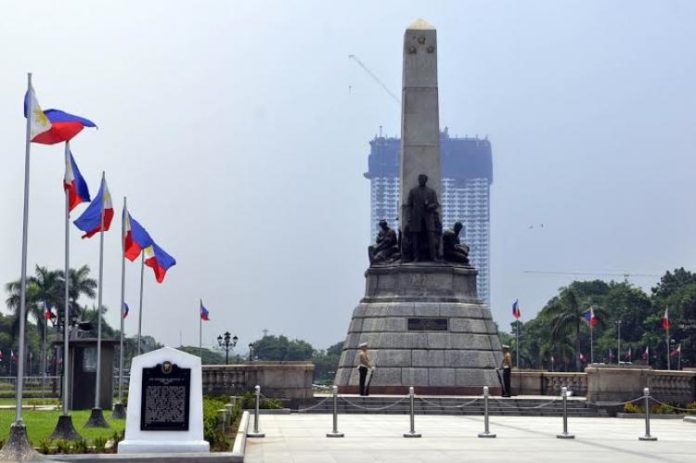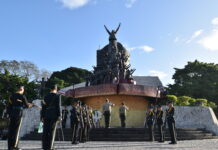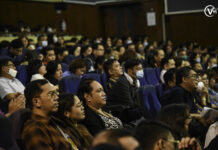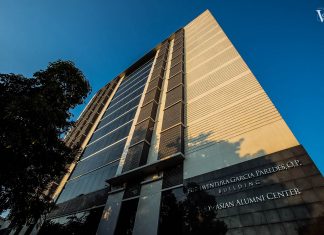ADVOCATES are calling for amendments to heritage protection laws to stop the construction of high-rise structures that ruin the skylines behind cultural and national landmarks.
Eric Zerrudo, director of the UST Graduate School Center for the Conservation of Cultural Property and Environment in the Tropics, pointed to loopholes in the National Cultural Heritage Act of 2009 or Republic Act (RA) 10066.
“The law does not tell you the principles, such as there should be a specific height on the construction of a building,” Zerrudo told the Varsitarian.
Legislation should be passed immediately as the construction of corporate and residential buildings are fast-paced.
“It may be too late if we don’t start protecting the viewpoints of our landmarks now,” he said.
Jose Victor Torres, faculty member in the history department of De La Salle University, agreed that the law cannot protect the sightlines of heritage structures.
“Buffer zones are existing but modern structures can be built outside the buffer zones and [still] destroy sightlines [while] still [following the] law,” Torres said in an online interview. “It is a clear violation of principles, not laws.”
Torres also slammed local government officials for viewing cultural heritage as a hindrance to development.
On April 25, the Supreme Court lifted the temporary restraining order against DMCI Homes’ construction of the Torre de Manila condominium, which has ruined the skyline of the Rizal Monument.
Mark Evidente, chief of the Heritage Conservation Society, said the heritage act only provides guidelines on conservation and protection of cultural sites.
“[RA 10066] only refers to the protection of the physical integrity of the [heritage] site and whether that site is in danger of significant alteration,” Evidente said in a forum at the National Museum last Aug. 12.
Evidente said National Historical Commission of the Philippines (NHCP) guidelines on landmark protection must be turned into law to prevent the viewpoints of cultural structures from being blocked.
The Heritage Act of 2009, which seeks to “protect, preserve, conserve and promote the nation’s cultural heritage, properties and histories and the ethnicity of local communities,” was signed by President Gloria Arroyo on March 26, 2010.
New Cabinet department
Zerrudo also backed the proposal to establish a Cabinet department for culture and the arts, filed by Sen. Loren Legarda.
“[The Department of Culture and Arts] should have direct links with other departments of the government so they will streamline these three cultural agencies such as NCCA (National Commission for Culture and the Arts), NHCP and National Museum,” he said.
Zerrudo criticized the overlapping functions of cultural agencies, saying it adds to the difficulty of advancing cultural heritage efforts.
“We should be proactive enough in defining agencies. It [is] not clear which cultural agency will do what. Some cultural agencies share the same function,” he said.
In June 2016, Senate Bill 31 or the Department of Culture and the Arts Act was filed by Sen. Legarda.
The bill seeks to strengthen the NCCA’s management of cultural agencies such as the Cultural Center of the Philippines, National Library of the Philippines, Komisyon sa Wikang Filipino and the Movie and Television Review and Classification Board.
Student participation, state funding
Zerrudo said cultural education and research should not stay in museums and classrooms.
“How [will] you translate heritage impact in the aspect of tourism? You really have to compel them to do research and have a good grasp of our heritage sites,” he said.
The Commission on Higher Education (CHEd) and NCCA have a P300-million fund for creative grants titled “Salikha,” which is offered to teaching and non-teaching personnel with reduced workloads because of the K to 12 transition.
Rica Santos, research program officer in CHEd’s K to 12 transition management unit, said the proposals would be used for the development of the arts and culture.
State funding for the NCCA has grown in the past five years. The P187-million budget for 2017 was an increase of more than 700 percent from P23 million in 2013, figures from the Department of Budget showed.
To investigate and expose unspoken issues and anomalies, send confidential news tips to the Special Reports team of the Varsitarian at specialreports.varsitarian@gmail.com or at THE VARSITARIAN office, Rm. 105, Tan Yan Kee Student Center, University of Santo Tomas, España, Manila.


















